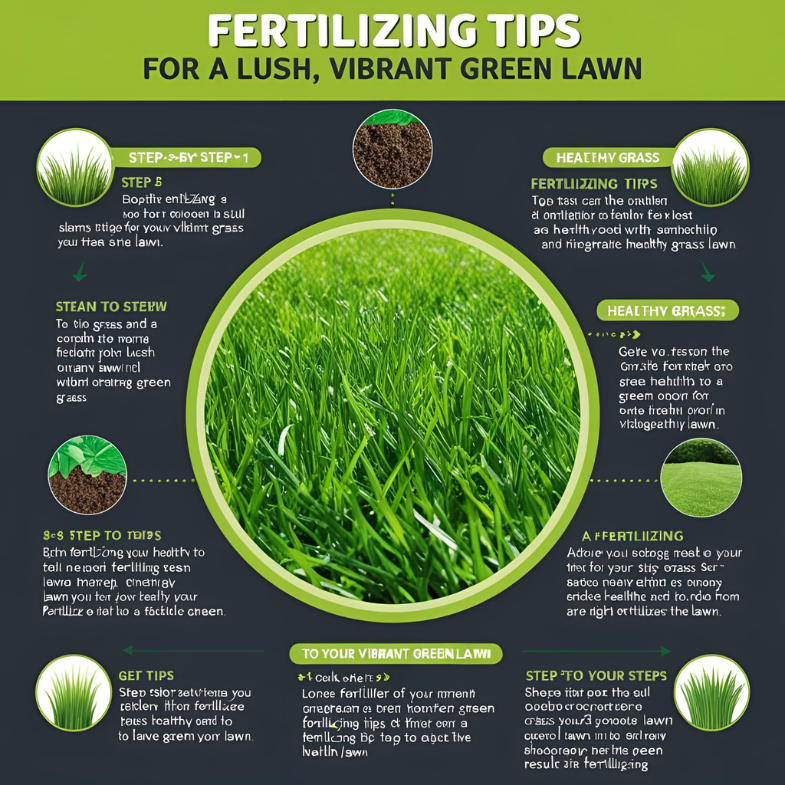
Creating a healthy, green lawn doesn’t have to be complicated. With the right fertilizing strategy, you can enjoy a beautiful yard that’s easy to maintain and environmentally friendly. Before you start, ensure your lawn is well-watered, free of disease, and growing actively. Then, follow these 15 essential tips to feed your grass the smart way and achieve that dream lawn.
1. 🌾 Fertilize Only When Your Grass Is Growing
Grass absorbs nutrients effectively only during active growth periods. Fertilizing dormant grass wastes product and risks harmful runoff. If you’re mowing your lawn, it’s a sign the grass is growing and ready for feeding.
2. 🍂 Prioritize Fall Fertilization
Fall is the ideal time to fertilize all types of grass—whether warm-season or cool-season varieties. The combination of warm soil, moisture, and moderate air temperatures encourages strong root development that sets your lawn up for a vibrant spring.
3. ⚠️ Use Nitrogen Wisely in Spring
Applying too much nitrogen fertilizer in spring can lead to fast shoot growth but weak roots, making your lawn vulnerable to drought, pests, and diseases. Limit nitrogen in spring and focus your fertilizing efforts in the fall for lasting health.
4. 🔢 Understand Fertilizer Labels
The three numbers on fertilizer packages represent nitrogen, phosphorus, and potassium percentages. Nitrogen, the first and most crucial for greening, should be the highest number to ensure quick, lush growth.
5. 🧪 Test Your Soil First
A soil test provides valuable insights into nutrient needs, helping you select the best fertilizer for your turf. Many services offer easy mail-in kits or online ordering for customized recommendations.
6. 🐢 Opt for Slow-Release Fertilizers
Slow-release formulas feed your grass gradually, reducing fertilizer burn risk and promoting steady, healthy growth instead of sudden spurts. Look for “slow-release nitrogen” on the label.
7. 💧 Water After Fertilizing
To activate fertilizer nutrients, water your lawn lightly (about a quarter-inch) to wash them into the root zone. If rain is forecasted, you can time fertilization accordingly.
8. 🚫 Skip Weed-and-Feed Combinations
Weed-and-feed products often mistime herbicide and fertilizer applications, leading to poor results. Use separate herbicides and fertilizers at their ideal times for the best lawn care.
9. 🛒 Buy Only What You Need
Calculate your lawn’s area and purchase fertilizer accordingly. Full sun lawns generally require 3 pounds of nitrogen per 1,000 square feet per season, while shaded areas need about half that. Avoid storing excess fertilizer.
10. 🌍 Protect the Environment
Over-fertilizing harms soil and water quality. Always follow the recommended application rates and methods to keep your lawn green without damaging nearby ecosystems.
11. 🍃 Leave Grass Clippings on the Lawn
Grass clippings act as natural fertilizer when left on your lawn, returning essential nutrients to the soil. This simple practice can reduce your fertilizer needs by up to a third.
12. ⏳ Be Patient with Results
Expect your lawn to respond within four to eight weeks after fertilizing, depending on temperature and moisture. If greening doesn’t occur, investigate soil, water, or environmental issues rather than adding more fertilizer.
13. 🌱 Consider Organic Fertilizers
Organic options like seaweed, bone meal, or cottonseed meal enrich your soil naturally but usually work slower and require more frequent applications than synthetic fertilizers.
14. 📅 Stick to Three Annual Applications
For consistent green color and moderate growth, fertilize in late spring, late summer, and late fall. Apply 1 pound of nitrogen per 1,000 square feet each time. If you leave clippings on the lawn, two applications can suffice.
15. ❄️ Use a Winterizer Fertilizer in Fall
A winterizer high in nitrogen and potassium prepares your lawn for cold months by boosting energy reserves and improving resistance to winter stress and diseases. This helps your lawn bounce back quickly in spring.
🌟 Ready to transform your lawn?
By following these expert tips, you’ll enjoy a greener, healthier lawn that’s easier to care for—and better for the environment. Want to learn more about lawn care or explore natural fertilizer options? Check out our recommended guides and products to keep your yard thriving all year long! 🌿
